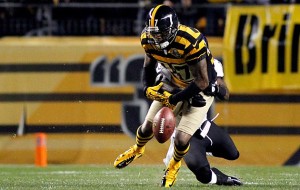Much has been made of Martin’s inability to handle that role. Leading up to the 2012 draft, much was made of how Martin only projected as a right tackle in the pros, even though (or perhaps because of what evaluators saw when) Martin played on the left side at Stanford with Andrew Luck. Miami played Martin on the right side of the line for the first eleven games of the season last year, but switched him to the blind side after Long suffered a season-ending injury. Pro Football Focus graded Martin as a terrible pass blocker in his rookie season, and he was even worse in the five starts he made at left tackle: In those games, he allowed an incredible 17 hurries, two hits, and two sacks.
I thought it might be interesting to run some tests on left tackles, building off a study that Jason Lisk ran on offensive linemen:
To do this, I looked at all offensive linemen since 1978 who made at least 1 pro bowl and started 80 or more games in their careers, and then found any season in which that player played in fewer than 10 games before age 34, after starting more than that amount the previous year at the same position. I then compared the team performance in things like points, yards per attempt, sack rate, and rushing yards per carry. As it turns out, we don’t have very many cases that allow us to look at this (19 players). If I had reliable game by game data for offensive linemen participation, I could broaden the study, but for now, I can’t tell which games a lineman missed, like I can with a quarterback or running back. My goal in setting this up the way I did was to find pretty good tackles and try to see if there were any differences the following year when they missed a large chunk of the season.
Our 19 offensive tackles averaged 15.1 games the year before the injury, and only 6.3 games played during the injury season. That’s a difference of 8.8 games played, or over half a season.
In his conclusion, Lisk noted that “The likely effect on a per game basis when playing versus when out with an injury was somewhere between 0.7 to 0.8 Net Yards per Attempt dropoff.” Well, what if we run the same study but (1) limit ourselves to left tackles [1]I changed the cutoffs to 14 starts in Year N and fewer than 9 starts in Year N+1 and (2) look at the yards-per-reception average of the team’s leading receiver? There are only 12 situations to examine, a sample size far too small to really use, but here are the results:
References
| ↑1 | I changed the cutoffs to 14 starts in Year N and fewer than 9 starts in Year N+1 |
|---|


